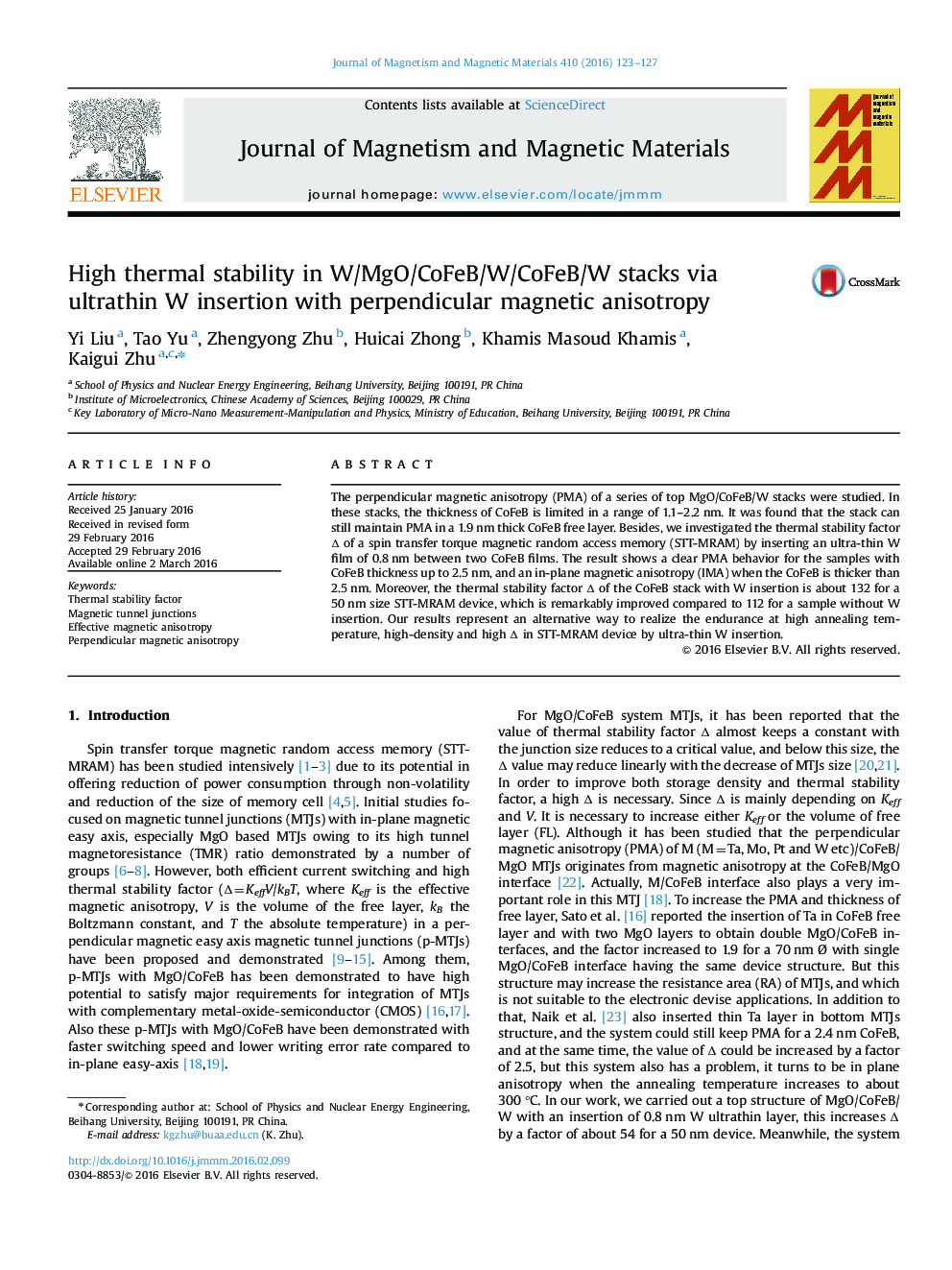| Article ID | Journal | Published Year | Pages | File Type |
|---|---|---|---|---|
| 1798009 | Journal of Magnetism and Magnetic Materials | 2016 | 5 Pages |
•The MgO/CoFeB/W multilayer can still maintain PMA in a CoFeB thickness of 1.9 nm.•The sample with 2.5 nm thickness of CoFeB by W insertion can still maintain PMA.•The sample with W insertion can still maintain PMA until the annealing temperature as high as 350 °C.•The thermal stability factor ∆ of sample with W insertion could be increase to about 132 for a 50 nm size STT-MRAM device.
The perpendicular magnetic anisotropy (PMA) of a series of top MgO/CoFeB/W stacks were studied. In these stacks, the thickness of CoFeB is limited in a range of 1.1–2.2 nm. It was found that the stack can still maintain PMA in a 1.9 nm thick CoFeB free layer. Besides, we investigated the thermal stability factor ∆ of a spin transfer torque magnetic random access memory (STT-MRAM) by inserting an ultra-thin W film of 0.8 nm between two CoFeB films. The result shows a clear PMA behavior for the samples with CoFeB thickness up to 2.5 nm, and an in-plane magnetic anisotropy (IMA) when the CoFeB is thicker than 2.5 nm. Moreover, the thermal stability factor ∆ of the CoFeB stack with W insertion is about 132 for a 50 nm size STT-MRAM device, which is remarkably improved compared to 112 for a sample without W insertion. Our results represent an alternative way to realize the endurance at high annealing temperature, high-density and high ∆ in STT-MRAM device by ultra-thin W insertion.
